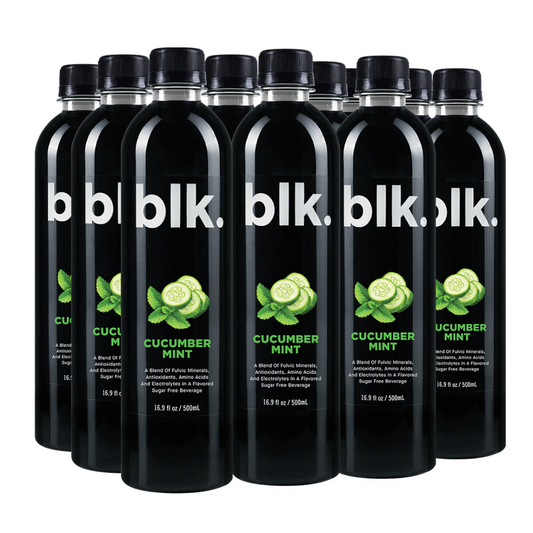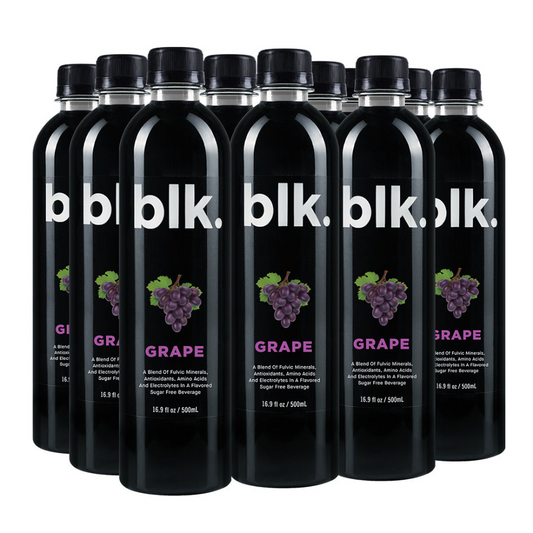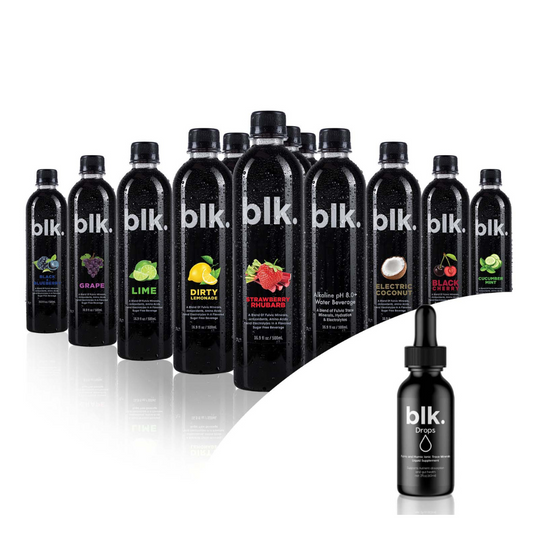
Combining Whey Protein With a Caloric Deficit For Optimal Body Composition
This Article Provides Insight Into The Following:
- How you can combine whey protein and caloric deficit to achieve optimal body composition
- How you can plan your meal with whey protein and caloric deficit
- Mistakes to avoid when combining whey protein and caloric deficit
- How you can adjust your body composition plan to ensure you achieve desirable results
Are you planning to get lean body using whey protein and caloric deficit? Combining whey protein with a caloric deficit for optimal body composition will ensure a healthy body fat percentage, higher lean body mass, adequate muscle and bone mass, and a hydrated body. Before determining how their combination works, you must first understand what ‘body composition,’ ‘whey protein,’ and ‘caloric deficit’ denote.
You probably heard a lot about whey protein, especially if you are a gym enthusiast or an athlete. More often than not, whey protein is a protein supplement associated with building lean muscle mass and post-workout muscle recovery. On the other hand, a caloric deficit is associated with consuming fewer calories than the standard requirements, whereas body composition is used to determine whether you have a healthy weight. Ripped.com, the leading online store for buying the best whey protein, shares how healthy body composition can be achieved through a combination of whey protein and a caloric deficit.
Defining Body Composition, Whey Protein, and Caloric Deficit: What Are They?
Before we get into the fundamentals of how combining whey protein and caloric deficit helps achieve a healthy body composition, you need to understand the individual basics and meanings of the three phrases.
Body Composition
In the health and fitness world, body composition is a common phrase among doctors and other health professionals. But what does it mean? This is your body's bone, fat, water and muscle percentages. Body composition determines whether your weight is healthy for your body.
Ideally, health professionals, or rather doctors, estimate the fat percentage in your body to determine your level of health. This is necessary because you can have several people with similar height and weight but different body fat and muscle composition. The implication of this is that among those people, there are those with a higher risk of developing certain health complications than others.
The typical body of a healthy human being should have more muscle and less fat. You can only figure out whether you have a healthy weight once you know your body composition.
Body composition is determined using the following:
- Skin calipers which measure your skinfold thickness, especially areas where fat is commonly stored.
- A body pod that measures the amount of air displaced by your body.
- DEXA (Dual X-ray Absorptiometry) which determines the amount of bone and muscle in your body.
- Underwater weighing, which approximates the fat mass in your body. This method estimates how much fat floats as lean tissue sinks when underwater.
- Bioelectrical impedance uses the speed of electrical current that flows throughout your body to estimate your body fat.
Whey Protein
For health and fitness enthusiasts, whey protein is not a foreign term. It is a milk-based protein powder commonly associated with athletes undertaking strength training. It is popular among athletes because it contains the essential nutrients and amino acids that support muscle growth. It's high digestibility, and absorption rate makes it a good fit for post-workout muscle repair and recovery. However, it is not considered safe for lactose-intolerant people.
Caloric Deficit
When you embark on a journey to make a lean body, your calorie intake should be lower than the calories burned. That is what is referred to as a caloric deficit. However, when the calories you take are higher than the calories burned, there won’t be a caloric deficit, thus no fat burn. Of course, there are two popular ways of increasing your caloric deficit; fitness exercises and changing your diet (the food you eat and how much you take). Health professionals recommend that you combine both to achieve healthy weight. You should consult a doctor to determine the minimum calories your body requires daily, then ask a dietician to help you change your diet.
The Benefits of Whey Protein for Body Composition
There are two ways in which whey protein alters your body composition; muscle growth and weight management.
Muscle Growth
To achieve your bodybuilding goals, you need to increase or maintain muscle mass while reducing the fat level in your body. But you can’t build muscles without proteins; protein is the building block of muscles. Whey protein contains all the essential amino acids and nutrients your body requires to build muscle. It also contains little to no fat and carbs, unlike other supplements. This is good for someone who wants to keep the fat level in their body low while bulking up. Whey protein helps you build a desirable and healthy physique.
Weight Management
By virtue of being a satiating macronutrient, whey protein is considered to be a weight management supplement. When you increase your protein intake, the calories burned to produce energy increase by approximately 80 to 100 calories daily. This, in turn, decreases your daily calorie intake by approximately 441 calories. A research study suggests that if you eat protein, your cravings reduce by about 60%, thus limiting your calorie intake. And there is no better protein source than whey protein which has massive benefits.
The Role of a Caloric Deficit in Body Composition
Theoretically, you would wonder how losing calories aids muscle gain when calories are required to provide energy to the body for muscle building. But a caloric deficit does not necessarily mean that your body will lack the energy to build muscle; if you are strategic with your diet, everything should be okay. If you maintain a safe caloric deficit range, your body won’t break down muscle to get energy for fueling bodily functions, which it otherwise does when you don’t have ‘sufficient’ calories to provide energy.
A calorie deficit is essential in maintaining healthy body composition. However, you need to get everything right and avoid mistakes like overestimating calories burned or underestimating your daily calorie intake. When you maintain calories at a safe range, your body gets sufficient energy to execute daily bodily functions.
You need to combine whey protein with a caloric deficit to achieve optimal body composition. This combination helps you build muscle while increasing calorie deficit.
Combining Whey Protein and a Caloric Deficit for Optimal Body Composition
You need to realize that body composition is not about losing weight only. It helps you estimate the fat and muscle gain ratio and fat gain and muscle loss ratio. However, you can minimize health risk by having a healthy fat-to-muscle mass ratio (body composition). If you do it correctly, you will be able to gain muscle while reducing fat at the same time.
Whey Protein and Calorie Deficit
The quality of your diet is crucial in reducing fat composition in the body. To achieve optimal body composition, you need to figure out how to increase caloric deficit while increasing muscle gain. The solution to this problem is whey protein. The latter is a supplement rich in high-quality protein that can help you build muscle and achieve caloric deficit simultaneously. However, adding strength training can accelerate your goal to have optimal body composition.
You should integrate whey protein into your diet because it also contains fewer carbs and fat that the body can break down to provide energy for muscle synthesis. During caloric deficit whey protein fills the void so that your body does not obtain energy from breaking down muscle proteins (gluconeogenesis) thus slowing muscle growth and not achieving optimal body composition.
Choosing the Right Whey Protein Supplement
The major difference between different types of whey protein powders is how they are obtained and processed. For instance, due to the filtration, whey protein isolate has a higher protein content than whey protein concentrate. Whey protein concentrate also retains most nutrients in the original protein source, such as carbs, fat, and lactose.
So, whey protein isolate may be ideal for people looking to limit carbs, fat, and lactose intake. The only drawback is that it is more expensive than whey protein concentrate. On the other hand, whey protein concentrate can provide almost the same amount of protein contained in whey protein isolate if taken in higher quantities. It is also cheaper, and it offers high-quality protein. However, if you are lactose intolerant, you should avoid whey protein concentrate.
Meal Planning For Combining Whey Protein And a Caloric Deficit
While planning the meal for calorie deficit and healthy body composition, consume fats, carbs and protein in a ratio of 30:20:50 respectively. You have to eat foods with low-calorie content to lose weight. But then you also need ‘sufficient’ calories to provide energy to fuel your daily bodily functions. And, not to forget, the food needs to have a high protein composition too.
So, where can you get high-quality protein while reducing your calorie intake? Whey protein provides the high protein intake required to improve metabolism and build muscle. It also has the added advantage of fewer carbs and fat; this means that you don’t have to worry about the energy your body requires to perform its daily functions. Having Whey protien isolate with water instead of milk is also a better option for losing weight.
Common Mistakes to Avoid When Combining Whey Protein And a Caloric Deficit
When you combine whey protein and caloric deficit, you need to be careful not to go too low on calorie intake. If you underestimate your calorie intake, your body will have to break down muscle proteins to get energy. The implication of this is that it hinders your muscles from growing. So, eventually, you end up reducing calories (intended objective), but your muscles also don’t grow (unintended objective). You need to maintain an ideal calorie range to ensure that you achieve your fitness goals. If the calories you are getting from whey protein are insufficient, you can integrate foods rich in carbs as long as you don’t exceed your recommended daily calorie intake.
Monitoring Progress and Adjusting Your Plan
Many people start slacking once they achieve their desired body composition, not knowing that losing what they have accomplished is easier and faster than gaining it. You need to know the progress you have made with your body composition and how to maintain it. It is important that you observe your exercise/workout routine, maintain a healthy diet rich in protein, and avoid too many calories to maintain the progress you have made. You can maintain logs using dairy or apps to monitor and track the macronutrient ratios and adjust them spontaneously. Consistency is the key to gaining long-term body composition.
Conclusion
Whether your long-term health and fitness goal is to build lean mass, improve athletic performance, or body composition, achieving it is just half the task. Once you attain the desired optimal body composition, you should know that maintaining it is also another uphill task. Of course, you might not have to follow the same workout routine or diet that got you there, but you have to maintain just enough to sustain the goals you have achieved.
Ultimately, you should know how to balance your calorie deficit within a safe range, integrate whey protein into your diet, and have a consistent strength training routine.
Frequently Asked Questions
-
Can I still use whey protein while on a caloric deficit?
-
Can whey protein be used as a meal replacement while on a caloric deficit?
-
What adjustments can I make to my plan if I do not see the results I want?
-
Can a caloric deficit affect body composition negatively if not done properly?




